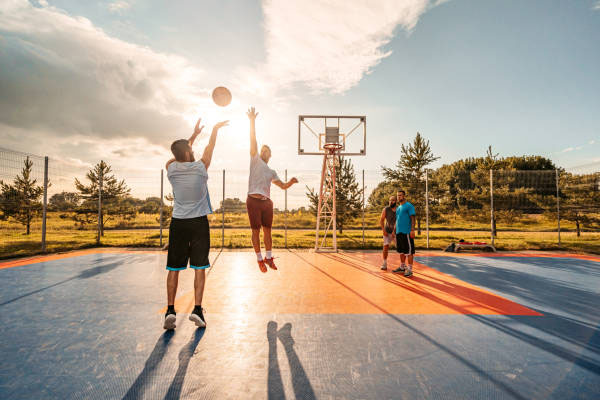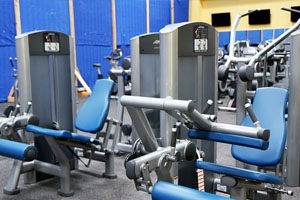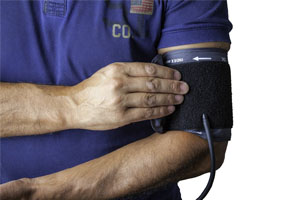Explore the core skills that define basketball excellence From dribbling to shooting, discover the essential techniques that elevate your game on the court Whether you re starting your basketball journey or honing your skills, these fundamentals are your key to success
What are basic basketball skills? If you're new to the world of basketball or looking to hone your skills, understanding the fundamental aspects of the game is essential. Basketball is a dynamic sport that combines athleticism, strategy, and teamwork. To excel on the court, players must master a range of skills, from dribbling and shooting to defensive techniques and court awareness. This comprehensive guide will walk you through the key components of becoming a skilled basketball player. Whether you're a beginner or seeking to refine your abilities, we'll cover it all, helping you develop a solid foundation in the sport.

Introduction to Basic Basketball Skills
Basketball is a dynamic and exciting sport that requires a combination of physical fitness, teamwork, and fundamental skills. To excel on the basketball court, it's crucial to master the basic skills that form the foundation of the game. Whether you're a beginner looking to learn the essentials or an experienced player seeking a refresher, understanding basic basketball skills is the first step towards becoming a proficient basketball player.
1. Dribbling Techniques
Dribbling is one of the fundamental skills in basketball. It involves bouncing the basketball on the floor while maintaining control and possession. Proper dribbling techniques are essential for moving the ball up and down the court, evading defenders, and setting up scoring opportunities. Key aspects of dribbling include:
1.1 Types of Dribbles
In basketball, there are various types of dribbles that players can use to navigate the court and outmaneuver opponents. Each type of dribble serves a specific purpose and can be a valuable weapon in a player's skill set. Here are some common types of dribbles:
- Crossover Dribble: This is one of the most popular dribbles, where a player uses a quick dribble to change direction by crossing the ball over from one hand to the other. It's effective for getting past defenders.
- Between the Legs Dribble: This dribble involves bouncing the ball between the legs, which can be useful for maintaining close ball control and surprising defenders.
- Behind-the-Back Dribble: Players use this dribble to move the ball from one side of their body to the other by passing it behind their back. It's a stylish and effective way to change direction.
- Spin Dribble: The spin dribble involves making a quick spin while dribbling to protect the ball from defenders and gain an advantage.
- Speed Dribble: This dribble is all about moving quickly down the court while maintaining control. It's often used on fast breaks to score rapidly.
Each of these dribble types has its own set of advantages and can be a powerful tool in a player's arsenal. The choice of which dribble to use depends on the specific situation and the defender's position.
1.2 Dribbling Drills
Improving your dribbling skills requires practice and repetition. Dribbling drills are an essential part of any basketball player's training regimen. These drills help enhance ball-handling skills, build muscle memory, and increase a player's confidence in controlling the ball. Here are some effective dribbling drills to consider:
- Stationary Dribbling: This basic drill involves standing in one spot and dribbling the ball as quickly as possible without losing control. It helps develop ball-handling speed and coordination.
- Figure 8 Drill: In this drill, players dribble the ball in a figure-eight pattern around their legs. It's excellent for improving hand-eye coordination and control.
- Two-Ball Dribbling: Players use two basketballs to dribble simultaneously. This drill enhances their ability to control the ball with both hands and improves overall dribbling skills.
- Cone Dribbling: Set up a series of cones or markers on the court and dribble the ball through them in various patterns. This drill simulates navigating through defenders during a game.
- Full-Court Dribbling: Practice dribbling the length of the court at full speed while maintaining control. It's an excellent drill for improving fast-break skills.
Consistent practice with these dribbling drills can significantly enhance a player's ability to handle the ball effectively during games. It's essential to focus on both speed and precision while performing these drills to maximize their benefits.
2. Shooting Fundamentals
Shooting is one of the most critical aspects of basketball. Becoming a skilled shooter requires a solid foundation in shooting fundamentals. Here are some key elements to focus on when honing your shooting skills:
2.1 Types of Shots
Successful basketball players need to be versatile in their shooting abilities. Different game situations call for various types of shots. Here are some essential types of shots you should be familiar with:
- Jump Shot: The jump shot is one of the most common and effective shots in basketball. It involves a quick jump and release of the ball while in the air. This shot provides a good view of the hoop and is often used for mid-range and long-range shooting.
- Layup: A layup is a close-range shot that's taken when you're near the basket. It involves a single step and a gentle release off the backboard or rim.
- Hook Shot: The hook shot is typically used by post players. It involves a sweeping, hooking motion with the ball, often used close to the basket.
- Floater: A floater is a soft, high-arching shot used when driving to the basket. It's effective for shooting over defenders in the paint.
- Three-Point Shot: The three-point shot is taken from beyond the three-point line. It's a crucial weapon for stretching the defense and increasing scoring opportunities.
- Fadeaway: The fadeaway is a move where the shooter jumps back while releasing the ball. It's used to create space from a defender and take a shot with a lower chance of getting blocked.
Each type of shot requires specific skills and techniques. Developing proficiency in various shot types makes you a more well-rounded and valuable player on the basketball court. Practice these shots to become a versatile and effective scorer.
2.2 Shooting Drills
Effective shooting drills are essential for improving your basketball skills. They help you develop muscle memory, accuracy, and consistency. Here are some valuable shooting drills to enhance your shooting abilities:
-
Spot-Up Shooting Drill: This drill involves standing still and taking shots from various spots on the court. It helps you work on your shooting form and accuracy. Focus on proper footwork and follow-through.
-
Mikan Drill: The Mikan Drill focuses on layups and close-range shots. It improves your ability to score near the basket. Alternate between your right and left hand while making layups to enhance your ambidextrous skills.
-
Free Throw Drill: Free throws are crucial during games. Practice free throws regularly to maintain a high shooting percentage from the free-throw line. Concentrate on your routine and breathing.
-
Around-the-World Drill: This fun drill involves making shots from various positions around the court. Start close to the basket and gradually move farther away. It's excellent for improving your mid-range and long-range shooting.
-
Catch-and-Shoot Drill: In this drill, a partner passes you the ball, and you take a shot immediately. It simulates in-game situations where you must shoot quickly. Focus on getting your shot off accurately in a short time.
-
Off-the-Dribble Drill: Work on shooting while on the move. Dribble the ball before taking a shot. This drill helps you become a more versatile scorer, especially when driving to the basket.
Remember that consistency is key when practicing shooting drills. Dedicate time to regular shooting workouts to see improvements in your game. A well-rounded player should be proficient in various types of shots and shooting situations.
3. Passing Skills
Passing is a fundamental aspect of basketball that involves moving the ball efficiently to your teammates. Developing good passing skills is essential for teamwork and game strategy. Let's explore the key elements of passing in basketball:
3.1 Types of Passes
In basketball, various types of passes are used to suit different game situations. Some common types of passes include:
- Chest Pass
- Bounce Pass
- Overhead Pass
- Wraparound Pass
- Alley-Oop Pass
3.2 Passing Drills
Developing your passing skills can significantly improve your basketball performance. Here are some passing drills to help you enhance your passing technique:
- Passing Accuracy Drill
- Outlet Pass Drill
- Give-and-Go Drill
- Three-Man Weave Drill
- Full-Court Passing Drill
4. Defensive Techniques
Effective defense is a crucial aspect of basketball. It involves preventing the opposing team from scoring by intercepting passes, blocking shots, and forcing turnovers. Two common defensive strategies are:
4.1 Man-to-Man Defense
Man-to-man defense is a defensive strategy in which each player is responsible for guarding an assigned opponent. Players stick to their matchups, making it challenging for the opposing team to find open players and take uncontested shots. It requires strong one-on-one defensive skills and constant communication among teammates.
4.2 Zone Defense
Zone defense involves dividing the defensive players into zones on the court. Instead of guarding specific opponents, defenders protect designated areas. Zone defenses can vary, such as a 2-3 zone or a 1-2-2 zone. Zone defenses are effective in limiting penetration into the key and can disrupt the opponent's offensive plays. Success in zone defense relies on proper positioning and teamwork.
5. Rebounding Fundamentals
Rebounding is a critical aspect of basketball, contributing to a team's success on both ends of the court. It involves grabbing the basketball after a missed field goal or free-throw attempt. There are two primary types of rebounds:
5.1 Offensive Rebounds
Offensive rebounds, often referred to as "O-boards," occur when a player from the offensive team retrieves the basketball after a missed shot by their own team. Offensive rebounds provide a second chance for scoring and can demoralize the opposing team. Players need a combination of positioning, timing, and determination to excel in offensive rebounding.
5.2 Defensive Rebounds
Defensive rebounds, or "D-boards," are secured by players from the defensive team after the opposing team's missed shots. Defensive rebounds are essential for ending the opponent's possession and initiating a fast break or half-court offense. Successful defensive rebounding requires boxing out, strong hands, and the ability to anticipate the trajectory of the ball.
6. Basketball IQ and Strategy
Basketball is not just about physical skills; it's also a mental game. Understanding the strategic aspects of the game, along with having a high basketball IQ, is essential for both individual and team success. Here, we explore some key elements of basketball strategy and awareness.
6.1 Game Awareness
Game awareness is the ability to read and understand the flow of a basketball game. It involves recognizing and adapting to various game situations, such as fast breaks, half-court sets, and defensive rotations. A high basketball IQ allows players to make smart decisions in real-time, contributing to their team's success.
6.2 Offensive and Defensive Strategies
Offensive and defensive strategies are fundamental to basketball success. Offensive strategies include plays, ball movement, and player positioning to create scoring opportunities. Defensive strategies involve techniques to prevent the opposing team from scoring. A strong understanding of both offensive and defensive strategies is vital for winning games and championships.
7. Conditioning and Training
Physical conditioning and skill development are critical components of basketball training. Conditioning prepares players for the physical demands of the game, while skill development workouts focus on honing basketball-specific skills. Let's explore these aspects in more detail.
7.1 Physical Conditioning
Physical conditioning involves activities such as cardio workouts, strength training, and agility drills. These exercises improve a player's endurance, strength, and overall physical fitness. Proper conditioning is essential to withstand the rigors of a fast-paced basketball game and maintain peak performance throughout.
7.2 Skill Development Workouts
Skill development workouts target specific aspects of a player's game. These can include shooting drills, dribbling exercises, and defensive practice. Skill development workouts are essential for refining techniques and becoming a well-rounded player. They are often tailored to individual strengths and weaknesses to maximize improvement.
FAQs: Mastering Basic Basketball Skills
Q1: What are the key components of dribbling techniques?
A1: Effective dribbling techniques in basketball involve mastering skills such as ball control, hand positioning, and using both hands to navigate the court confidently. These fundamentals help players protect the ball and maintain possession while on the move.
Q2: How can I improve my shooting accuracy?
A2: Improving shooting accuracy requires a combination of factors, including proper shooting form, hand-eye coordination, and consistent practice. Focusing on shot selection and refining your shooting mechanics will contribute to greater accuracy on the court.
Q3: What is the importance of passing skills in basketball?
A3: Passing is a fundamental aspect of basketball that involves teamwork and court awareness. Strong passing skills facilitate ball movement, create scoring opportunities, and enhance overall team performance. Effective passes include chest passes, bounce passes, and no-look passes.
Q4: How can I become a better defender on the court?
A4: Improving your defensive skills in basketball requires a combination of techniques such as footwork, positioning, and anticipation. Becoming a better defender involves staying in front of your opponent, blocking shots, and making steals while maintaining defensive discipline.
Q5: What role does basketball IQ play in the game?
A5: Basketball IQ, or court awareness, is crucial for making smart decisions during a game. It involves understanding game strategies, reading the opponent's moves, and making quick decisions on offense and defense. A high basketball IQ enhances a player's overall performance and contribution to the team.










